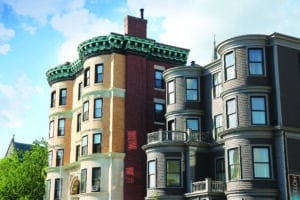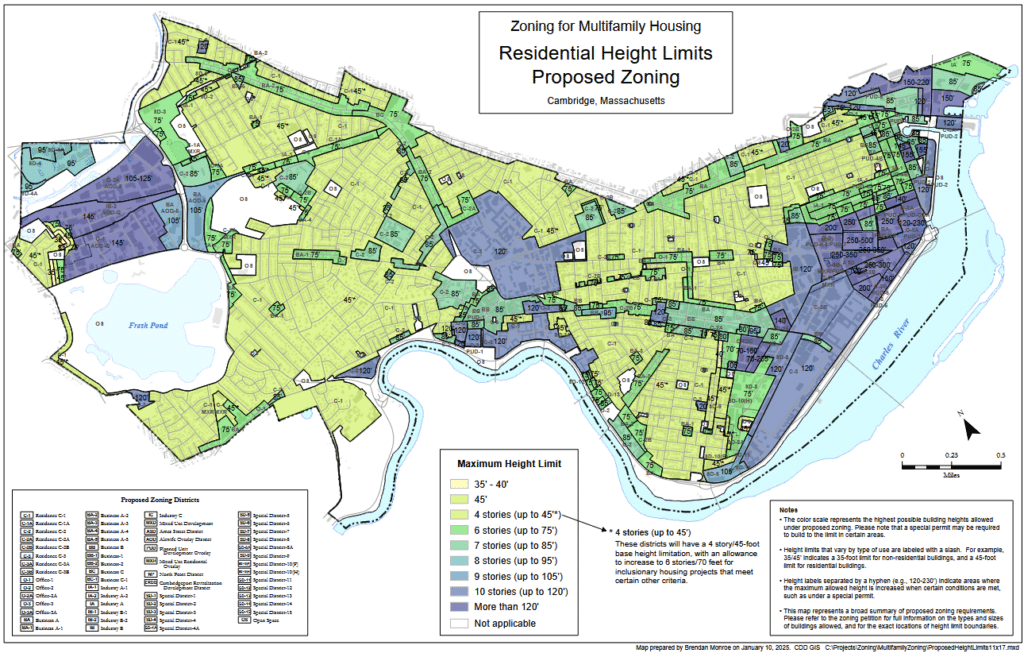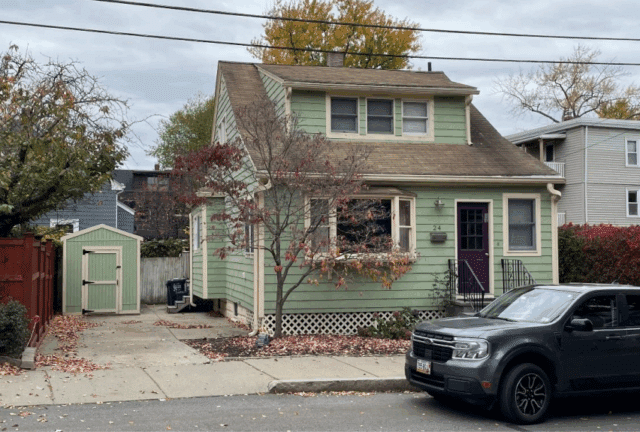
A citywide rezoning plan approved in February is projected to enable development of nearly 3,600 new homes by 2040, according to an analysis by Cambridge’s Community Development Department. iStock photo
Cambridge took a bold step to reshape the future of development when officials voted to eliminate single-family zoning and allow construction of 4- to 6-story multifamily housing as-of-right across the city.
Since the February vote of the City Council, developers and long-time property owners have shown strong interest in projects catalyzed by the new zoning.
But some officials and housing advocates say previously-overlooked regulations threaten to undermine the rezoning’s intent of encouraging housing development and streamlining permitting. Historical protection regulations require developers to go through additional reviews, potentially blocking many projects.
“A lot of the people who sit on those boards were not supportive of the multifamily housing ordinance,” Cambridge Vice Mayor Marc McGovern said. “And I don’t want to see those boards and commissions become the stopgap to stop development from happening, so they’re just going to deny, deny, deny. That’s not what their role is.”
Historic Commission’s Wide Purview
The city has an expansive definition of potentially historic properties subject to review for demolition delay, said Justin Saif, co-chair of A Better Cambridge, a housing advocacy group that campaigned in favor of the rezoning. And the list of such properties grows daily.

A map of areas, in yellow-green, covered by the upzoning. Image courtesy of the city of Cambridge
Any building more than 50 years old can’t be demolished without such a review, meaning that houses built in the mid-1970s now are considered potentially historic.
“It is a big concern,” Saif said.
After a developer proposed replacing a 1931 bungalow on Newell Street with a larger single-family home, Cambridge Historical Commission staff recommended the property be considered significant. The report cited the house being among 11 “nearly identical homes” built by the same developer and its ownership by “multiple generations of the Cambridge Police Department.”
Historic Commission Director Charles Sullivan did not return a request for comment.
Cambridge has two historic districts and four neighborhood conservation districts, which require review of construction, demolition and alterations of buildings within their boundaries.
Familiar Complaints About Height and Appearance
The City Council’s landmark vote was designed to increase housing production in one of New England’s most expensive housing markets. Median single-family home prices in Cambridge topped $1.9 million in the first five months of 2025, according to data compiled by The Warren Group, publisher of Banker & Tradesman.

A broad category of Cambridge housing requires historical protection reviews before demolition, including any structure more than 50 years old. Pictured is a 1931 bungalow at 24 Newell St. proposed for replacement with a larger single-family home. Photo courtesy of Cambridge Historical Commission
The rezoning is projected to enable development of nearly 3,600 new homes by 2040, according to an analysis by Cambridge’s Community Development Department.
But one of the first major projects to be proposed under the new zoning is facing neighborhood opposition, including complaints about the building height and architecture. Woburn-based Contempo Builders is seeking to replace a 4-unit apartment house with a 6-story, 29-unit building at 60 Ellery St.
The project would set aside 20 percent of the square-footage for income-restricted units, qualifying for an affordable density bonus allowing 6-story buildings. The property is located in the Mid Cambridge Neighborhood Conservation District.
At a hearing in June, residents objected to the building’s height and architectural design, according to a report in the Cambridge Day. The Mid Cambridge Conservation District Commission has continued a hearing on the project until August.

Steve Adams
Council to Investigate Bias
In April, the council voted to study the track record of the Half Crown-Marsh Neighborhood Conservation District, responding to complaints that its commission has an anti-development bias. The district’s commission regulates an area comprising approximately 200 buildings west of Harvard Square.
More than 20 property owners and developers in Cambridge have hired Khalsa Design, a Somerville architecture firm, to design multifamily projects, Principal Tanya Carriere said.
“As you go through the historical processes, they are still developing their procedures on how that is going to work,” Carriere said. “Somebody is going to be the first building in a neighborhood [under the rezoning] and it’s not going to fit in at first, but as you do more of these buildings, it is going to fit in.”
Despite the recent concerns, A Better Cambridge’s Saif said the initial level of response to the changes seems encouraging.
“It’s hard to know what to expect these days because there’s a lot of talk about construction costs and tariffs and interest rates being so high,” he said. “But some developers are finding it possible to make the numbers work, or think at the end of the day they’ll be able to.”






